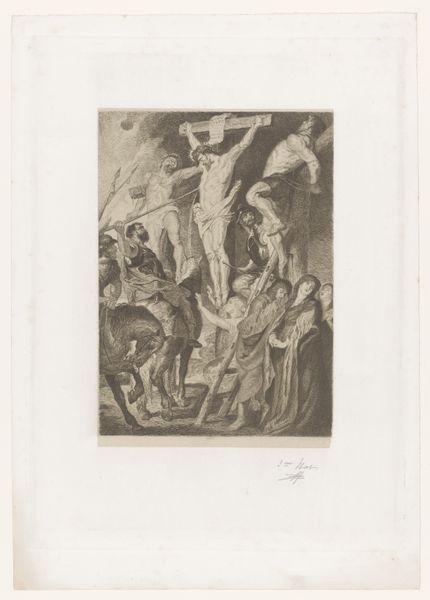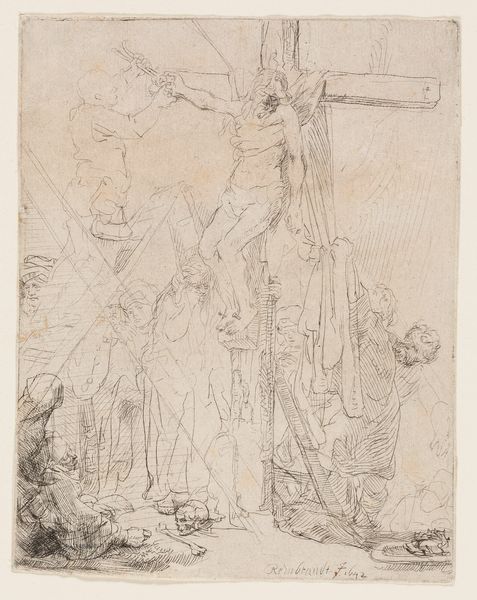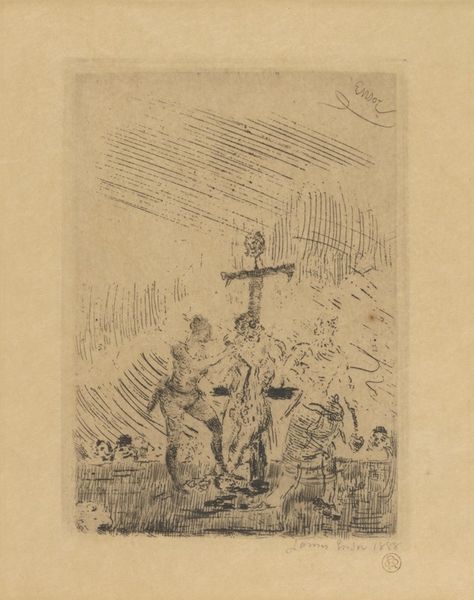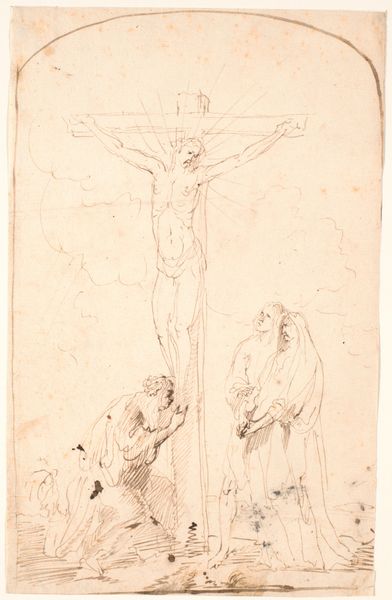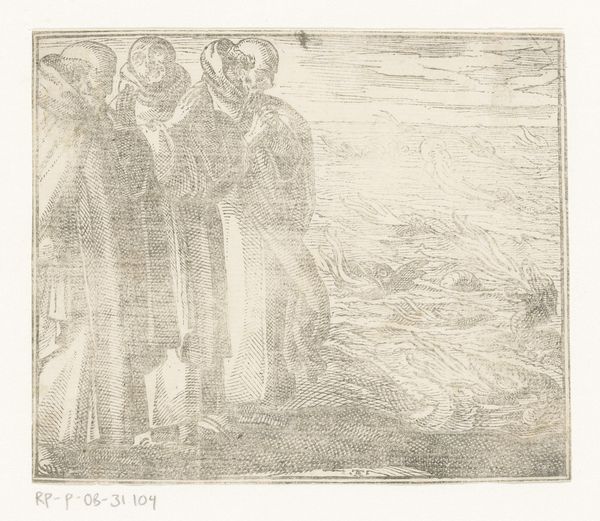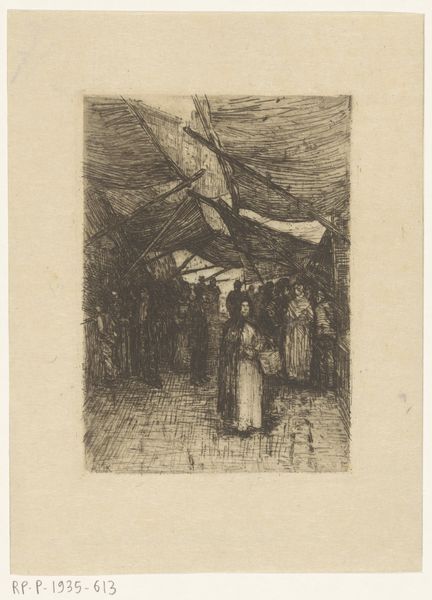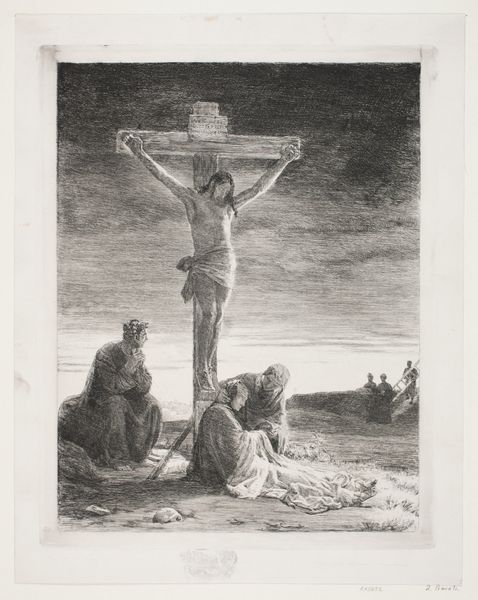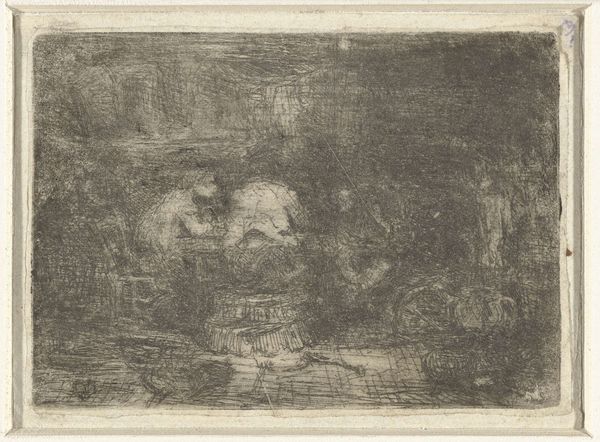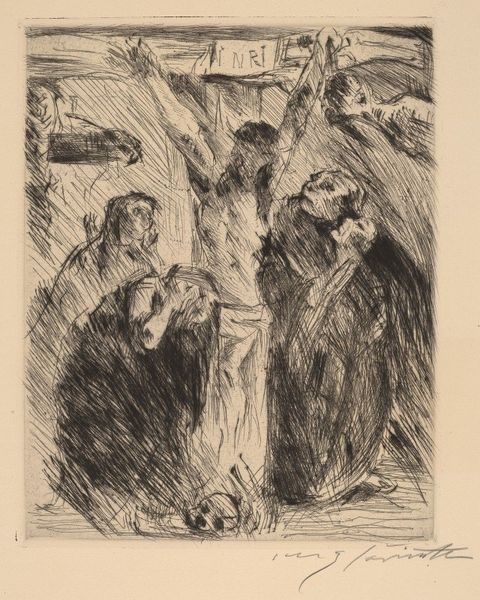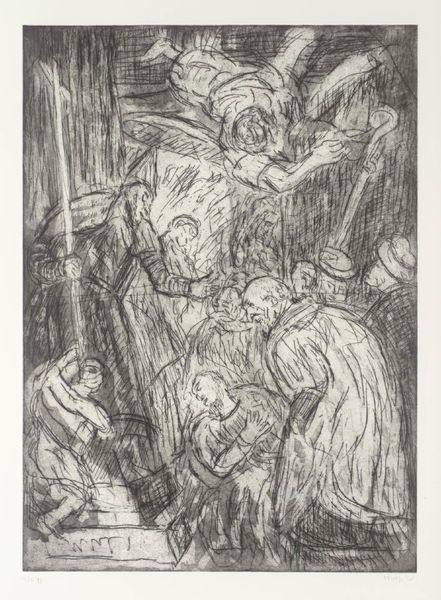
drawing, etching
#
drawing
#
etching
#
figuration
#
symbolism
#
history-painting
#
grotesque
Copyright: Public Domain: Artvee
James Ensor etched "Christus door duivels gekweld," depicting Christ's crucifixion amidst tormenting figures. The cross, a symbol of sacrifice, stands starkly against a chaotic scene filled with jeering figures and skeletal demons. This image is a potent manifestation of the enduring theme of human suffering and divine trial. The motif of the crucified Christ recurs throughout art history, from Byzantine icons to Renaissance paintings, each iteration reflecting its cultural milieu. Ensor's grotesque figures echo the demons found in medieval art, embodying the basest aspects of human nature. These figures are reminiscent of the diableries found in the margins of illuminated manuscripts. The mask-like faces, a common element in Ensor's work, add a layer of psychological depth, suggesting hidden intentions. Ensor's etching taps into our collective memory, stirring deep-seated fears and anxieties. The image resonates with a primal understanding of sacrifice and suffering, a timeless narrative that continues to evoke emotional responses. It reflects humanity’s cyclical obsessions with death, redemption, and the grotesque, forever resurfacing.
Comments
No comments
Be the first to comment and join the conversation on the ultimate creative platform.

